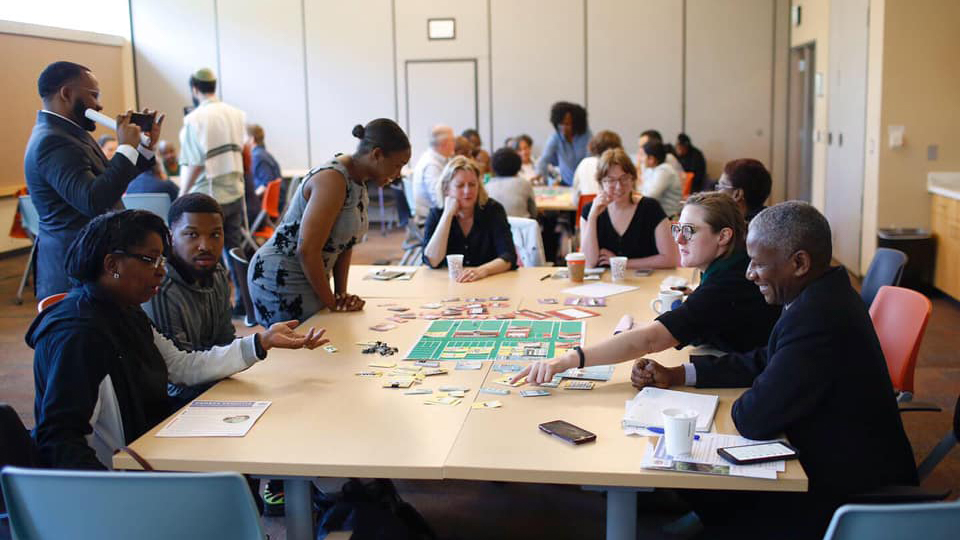The Zoning Game is a collaboration between the Detroit City Planning Commission, Code Studio and Interboro Partners, created specifically for the ZoneDetroit project.
ABOUT THE GAME
The Zoning Game is an interactive board game created to engage the public in the zoning process in a collaborative and constructive format. The game invites the public to learn how zoning shapes a community and allows them to develop and present ideas for rezoning an imaginary neighborhood, while connecting and collaborating with other members of the community. Through this process, public engagement is increased, relationships are strengthened, and the City gets invaluable feedback.
PLAYING THE GAME
Made up of a felt game board and felt tiles, players work together to “develop” lots – deciding what land uses belong where and at what scale – to create their ideal neighborhood (paper versions of the game are also available). Neighborhood guides showing real Detroit neighborhood land use examples are provided and help guide decision-making. A group conversation guided by a facilitator provides an opportunity for players to present, discuss and analyze the neighborhood the group created.
LESSONS LEARNED
An estimated 200 players have already played the Zoning Game at about 10 public meetings. Many recurring themes and topics have emerged through the process, including: parking and parking lot design; the need for more neighborhood schools; allowing for more mixed-uses, especially in residential areas; appropriate uses for commercial corridors; and the need for separating industrial uses from residential and other sensitive uses.
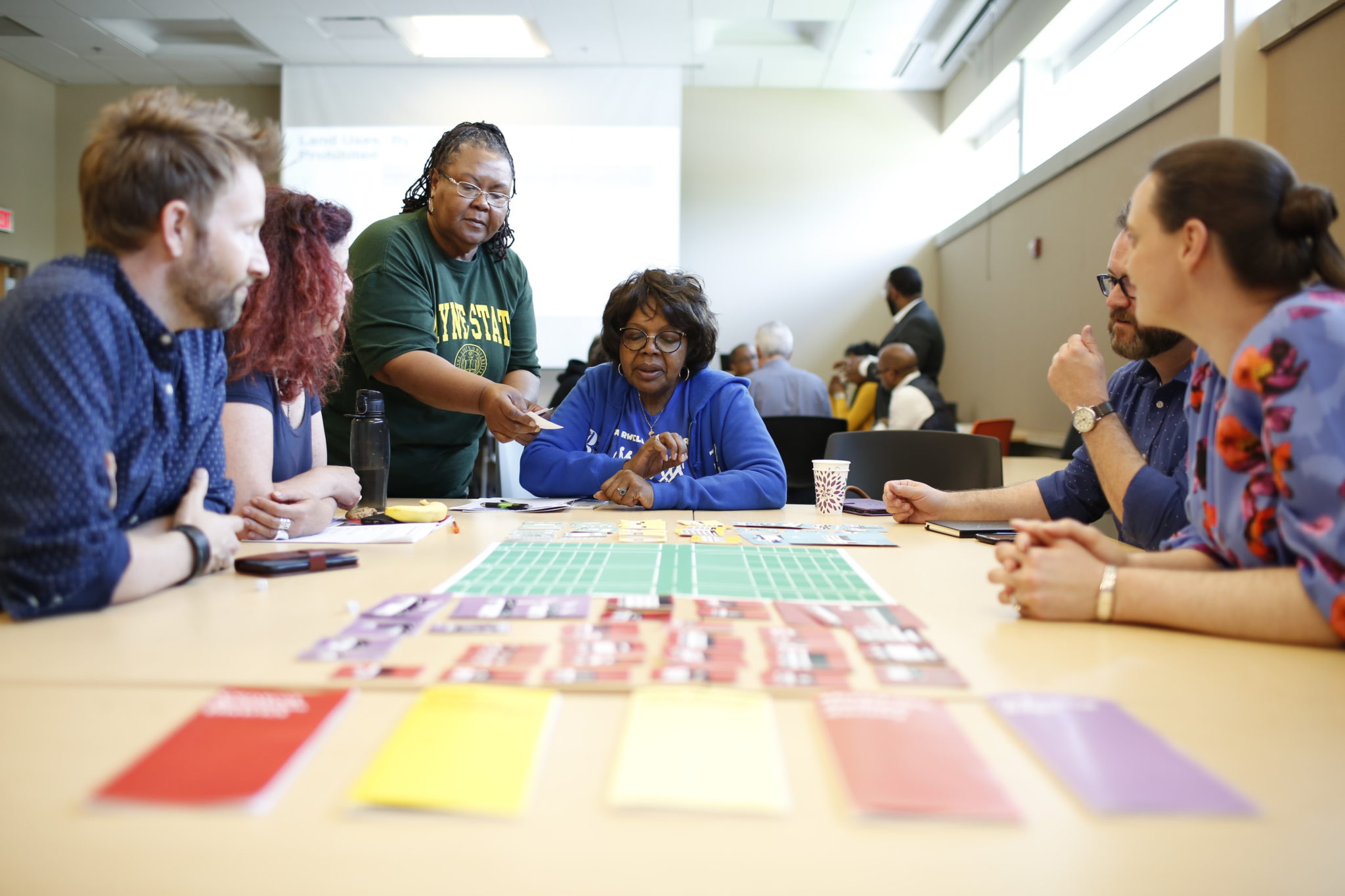
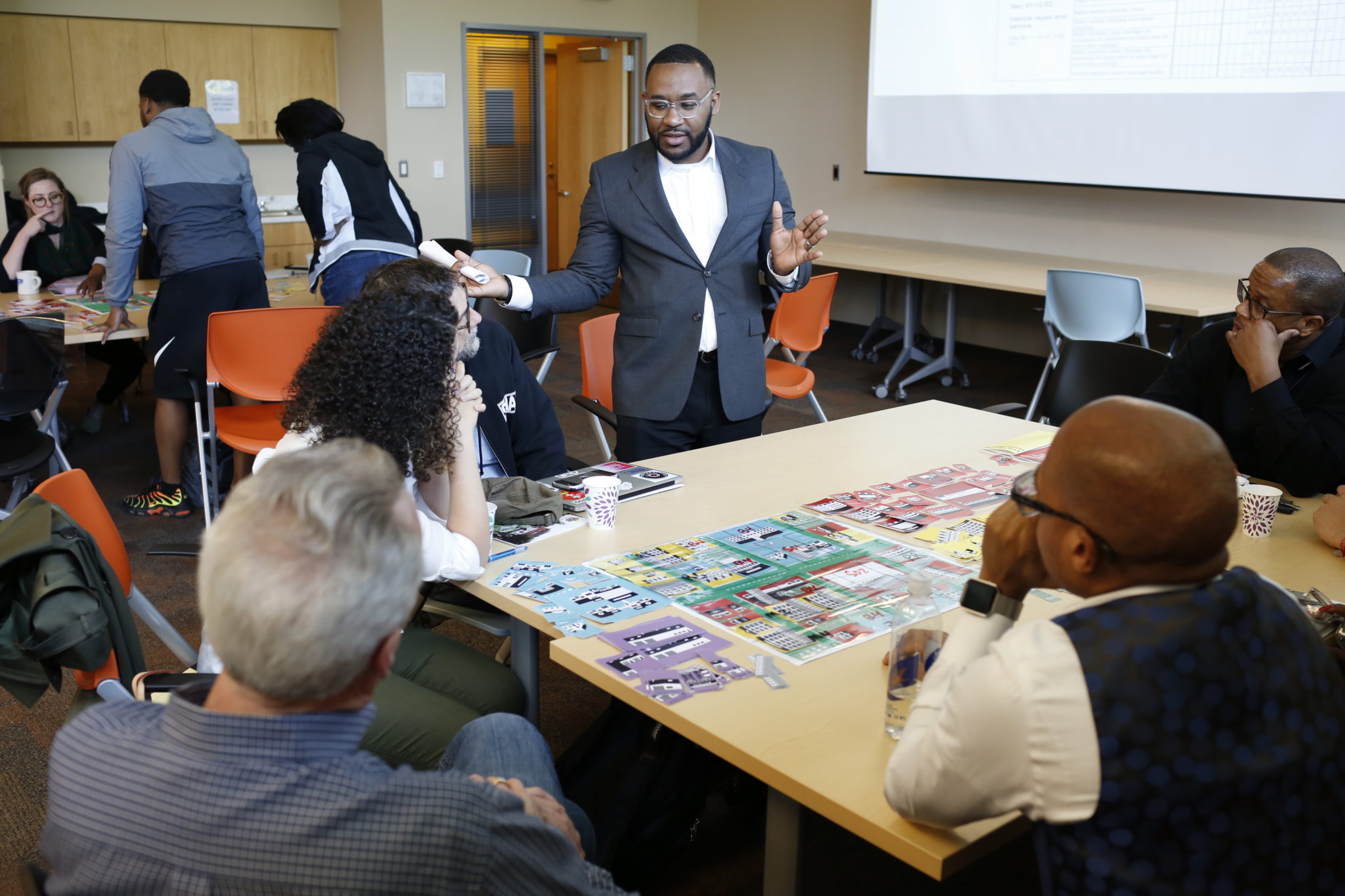
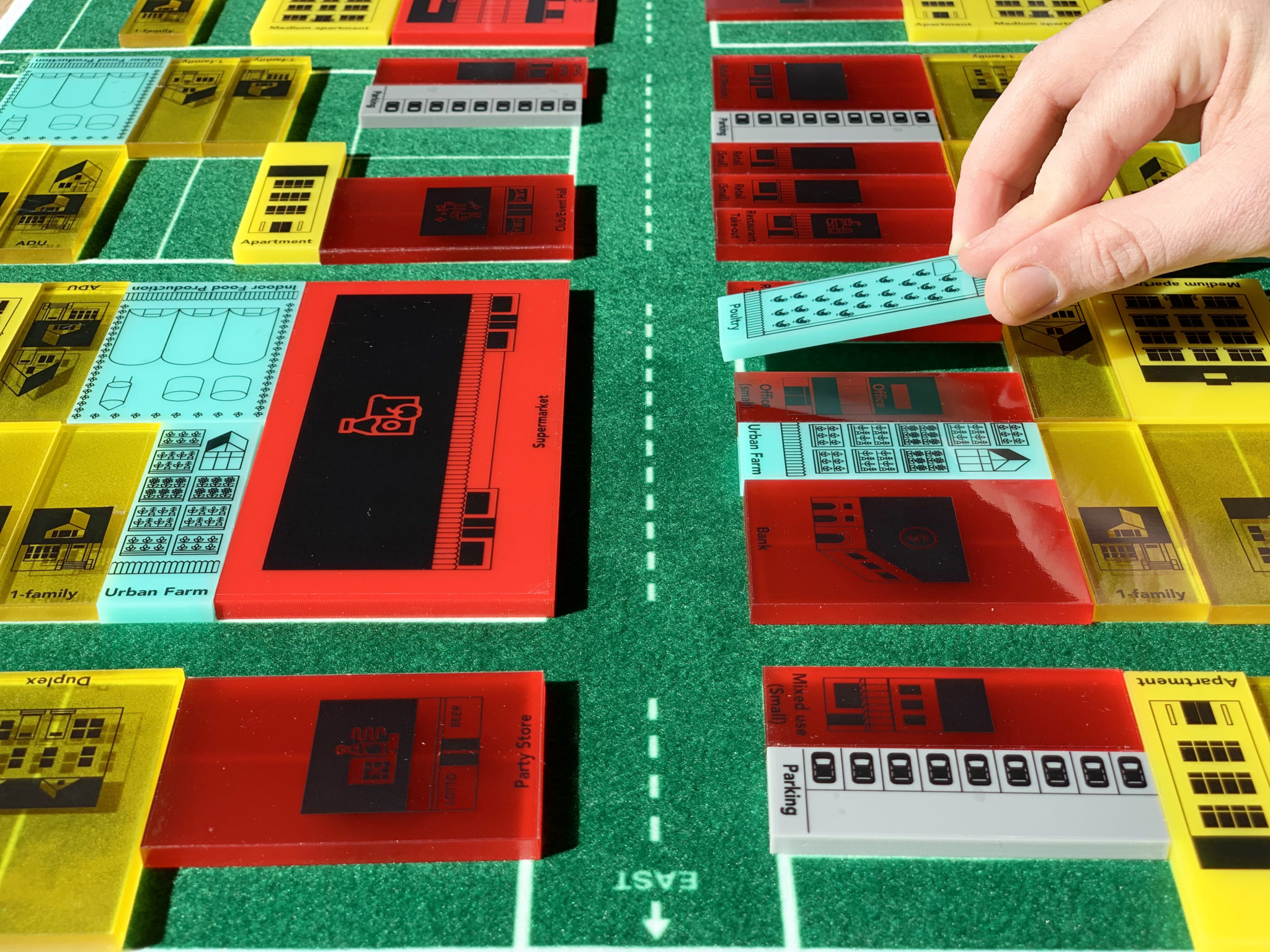
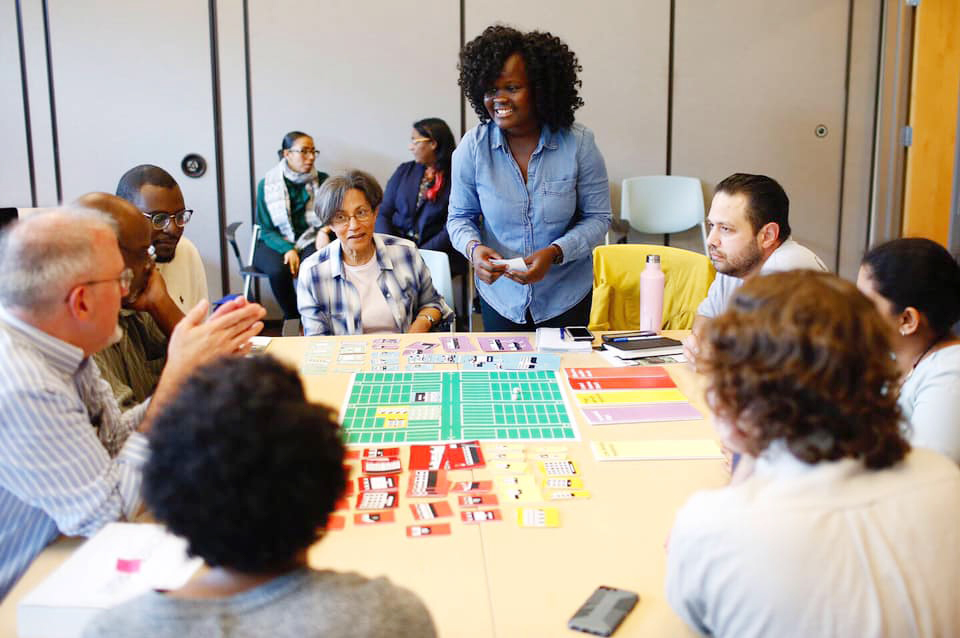
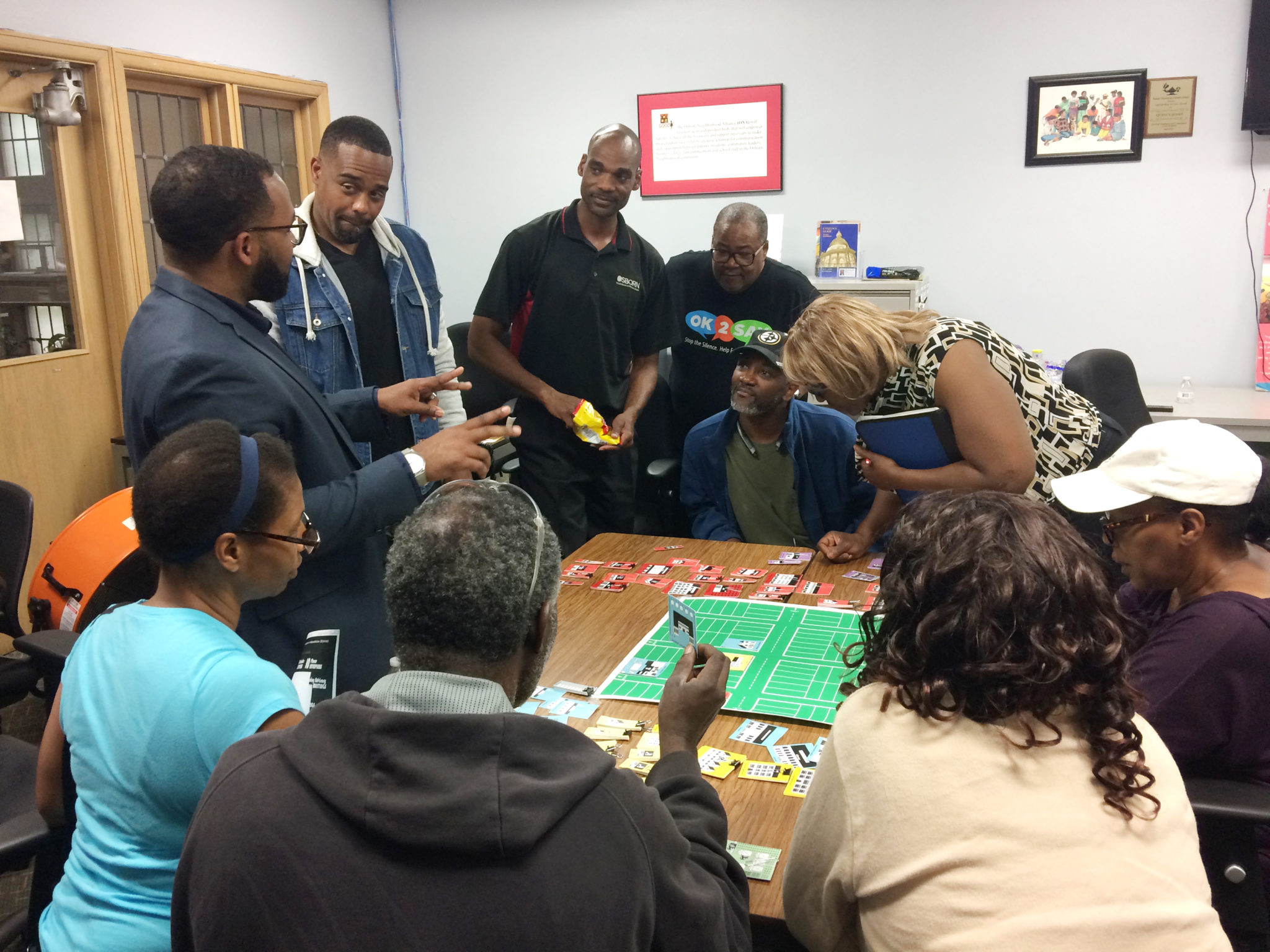
HOW TO PLAY:
Below are the basic materials and rules of play for the Zoning Game. Be sure to check out the full list of instructions and important questions asked during game play. Click on the highlighted materials to see example pieces of the game.
Materials:
- Neighborhood game board
- One set of development tiles
- Facilitator question sheet
- Participant question sheets
- Sample neighborhood guides
Rules of Play:
- Teams are made up of 2-6 players
- Players take turns. The player decides what types of development they want to place in the neighborhood, with the help and input from the rest of the group.
- Players continue taking turns until the board is full, or the facilitator calls time.
- Players fill out the question sheets, answering questions about the neighborhood they created. How do they think their neighborhood turned out? What do they think could be improved? Could this neighborhood work in Detroit?
- The facilitator leads a group conversation where players can discuss their neighborhood.

